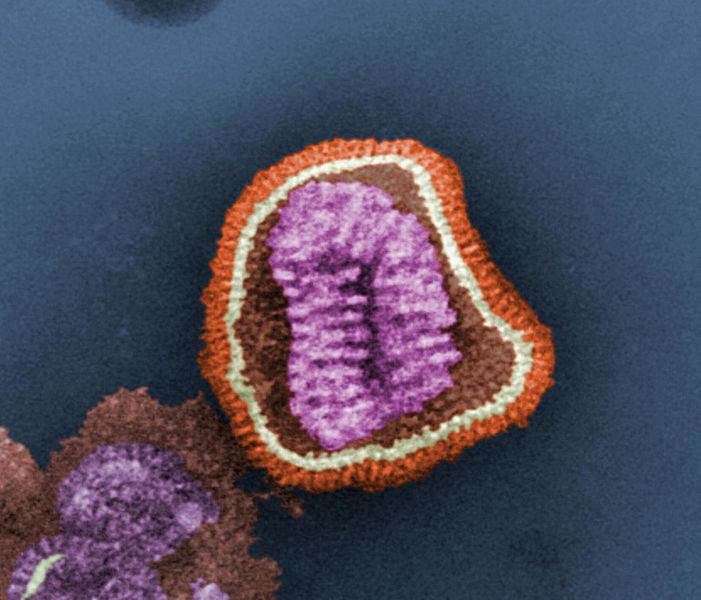Image: Influenza virus particle color

Description: This (Pseudocolored) negative-stained (false-colored) transmission electron micrograph (TEM) depicts the ultrastructural details of an influenza virus particle, or “virion”. A member of the taxonomic family Orthomyxoviridae, the influenza virus is a single-stranded RNA organism The flu is a contagious respiratory illness caused by influenza viruses. It can cause mild to severe illness, and at times can lead to death. The best way to prevent this illness is by getting a flu vaccination each fall. Every year in the United States, on average: - 5% to 20% of the population gets the flu - more than 200,000 people are hospitalized from flu complications, and - about 36,000 people die from flu. Some people, such as older people, young children, and people with certain health conditions, are at high risk for serious flu complications. See PHIL 10073 for a colorized version of this image. Influenza A and B are the two types of influenza viruses that cause epidemic human disease. Influenza A viruses are further categorized into subtypes on the basis of two surface antigens: hemagglutinin and neuraminidase. Influenza B viruses are not categorized into subtypes. Since 1977, influenza A (H1N1) viruses, influenza A (H3N2) viruses, and influenza B viruses have been in global circulation. In 2001, influenza A (H1N2) viruses that probably emerged after genetic reassortment between human A (H3N2) and A (H1N1) viruses began circulating widely. Both influenza A and B viruses are further separated into groups on the basis of antigenic characteristics. New influenza virus variants result from frequent antigenic change (i.e., antigenic drift) resulting from point mutations that occur during viral replication. Influenza B viruses undergo antigenic drift less rapidly than influenza A viruses.
Title: Influenza virus particle color
Credit: This media comes from the Centers for Disease Control and Prevention's Public Health Image Library (PHIL), with identification number #10073. Note: Not all PHIL images are public domain; be sure to check copyright status and credit authors and content providers. English | Slovenščina | +/−
Author: Photo Credit: Cynthia Goldsmith Content Providers(s): CDC/ Dr. Erskine. L. Palmer; Dr. M. L. Martin
Permission: None - This image is in the public domain and thus free of any copyright restrictions. As a matter of courtesy we request that the content provider be credited and notified in any public or private usage of this image.
Usage Terms: Public domain
License: Public domain
Attribution Required?: No
Image usage
The following page links to this image:

